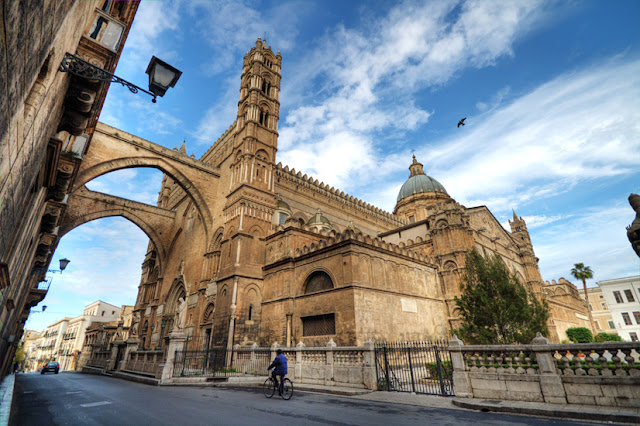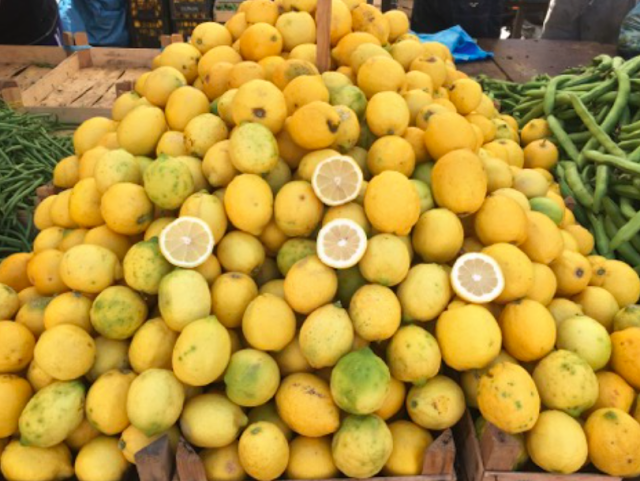Street Shopping In Palermo: The Best Markets & Street Food
It is no wonder that Palermo has recently been named Italy’s 2018 capital of culture. Not only is the Sicilian capital overflowing with impressive neoclassical architecture, vibrant Byzantine tiles, and an expansive history full of Arabic influence, its culture has been influenced and beautified by the fact that for centuries it has been one of Italy’s busiest ports. There always has been a constant flow of foreigners, traders, and goods from other European and African countries, resulting in an exotic economic space full of bustling markets selling fresh produce, meats, fish, wine, spices, and other various trinkets.
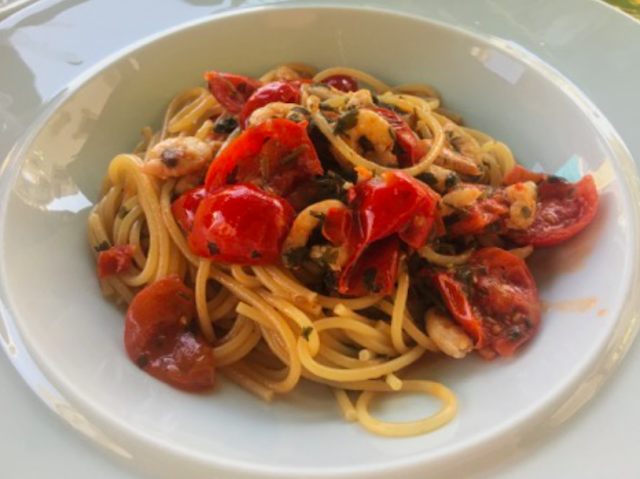
Hand in hand with Palermo’s outdoor markets, is the island’s renowned street food. On almost every corner, as well as at the markets, you can find inexpensive, tantalizing fried and sweet snacks originating from Sicily. Keep reading for a guide to the four historical markets and the must-have street food in Palermo. Remember, if you really want a chance to view all the fresh products available, go to the markets in the early morning and before 10am if you are a serious shopper.
The Markets:
Ballarò
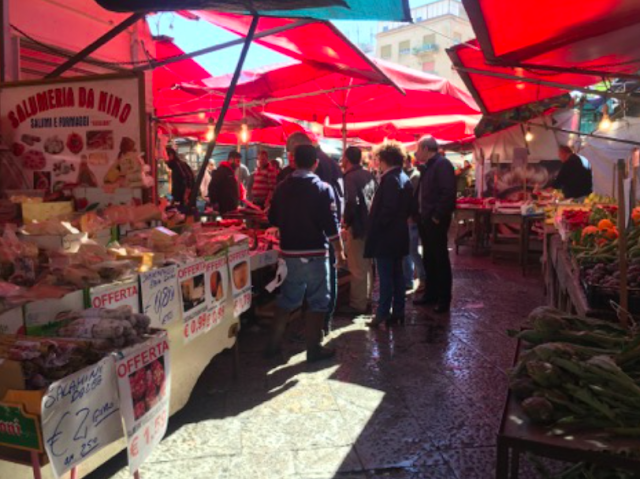
You will find produce at all of the markets in Palermo, but Ballarò is not only Palermo’s oldest market, it is the city’s primary food market, selling bundles of fresh fruits, vegetables, fish, meats, and cheeses. You will also find some stalls with clothing and household goods, but this is not what people come to Ballarò for.
The fishmongers will have everything from huge chunks of meaty swordfish or ‘pesce spada’ to perfectly shaped clams or ‘vongole’ and delicate looking ‘polpi’ or octopus. At the butchers stalls, meat will be both displayed on tables and hanging above your head. The fresh produce will be spilling over the stalls and stacked boxes deep. In summer especially, the fruits available will remind you that you have stepped into a tropical paradise. The market will be bursting with ‘fichi’ or figs, ‘pesche’ or peaches, ‘cocomero’ or watermelon, ‘limoni’ or lemons, and much more. It is almost guaranteed that you will see a variation of fruit or vegetable that you have never seen before.
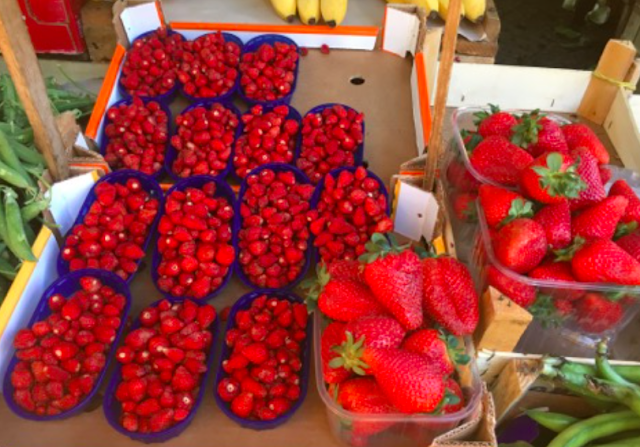
A word of warning, If the ‘arance rosse’ or ‘sanguigno comune’ as they are known as in Sicily catch your eye, do not buy the first blood oranges you see, check the prices at the other stalls first. You most likely will find much cheaper ones a few stalls down, especially in the centre of the market. Stock up on some fruit to snack on as you explore the rest of Palermo. You will want some fresh fruit after all the fried food!
As you walk through the shade of the stalls, winding through the throng of people and scooters that are weaving about, listen for the sounds of the market. At least every minute, a merchant will yell out, starting an instant chain reaction and the air will soon be filled with Italian. With the merchant’s vocally advertising their prices, you will truly feel like you stepped into an Arabic bazaar centuries back.
Vuccuria
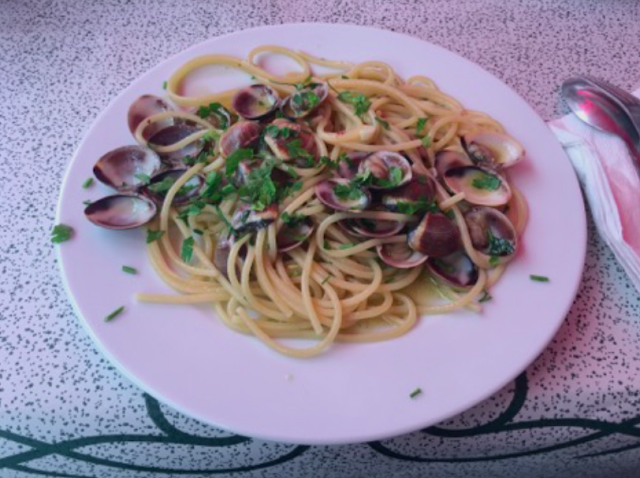
Walk around Palermo and build up an appetite before coming to this market, because the fresh fish cooked in the piazza and the fried snacks at the cafes that line the market are impeccable and authentic here. Merchants start selling their fresh fish, fruit, and vegetables at 4am, so make sure you get here early and definitely before 2pm when the market officially dies down. The stalls, filled with food, spices, olive oil, wine, books, and keepsakes, wrap through the narrow streets with high-ceilinged apartments and laundry hanging above and popular bars and restaurants below.
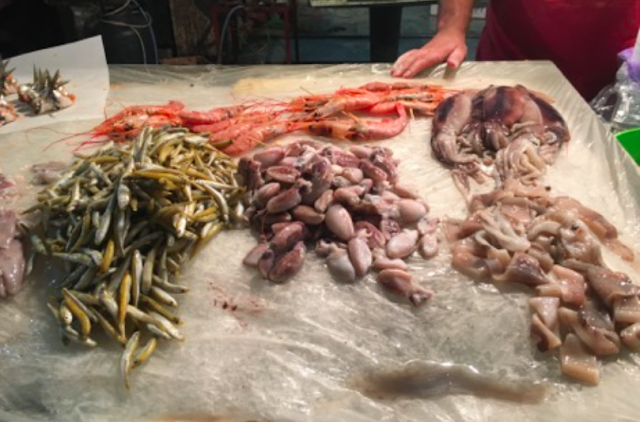
Many of the restaurants and vendors nearby buy their fish and produce here. If you are hungry for lunch, avoid the tourist traps and go to the family owned ‘Trattoria da Toto.’ Order a glass of white wine and try the ‘fritto misto,’ a mixture of different types of fried fish depending on what has been caught that day, or one of their fresh pastas with fish purchased from the market that morning. Order and eat here before 3pm.
Come back to Vuccuria at night if you want to experience authentic, lively night life in Palermo. The stalls will be gone, but locals, both young and old, can be found drinking and eating on the same streets as the morning market. Even at night the main square will be inundated with vendors cooking fish, grilling meat, and frying snacks. The delicious smell alone will lead you back.
Capo
Located behind the magnificent ‘Teatro Massimo,’ Capo is another of Palermo’s large outdoor markets located in the historic district with the same name. Like Ballarò in the mornings it is overflowing with fruit, vegetables, and fish and like Vuccuria you can also find spices, dried goods, and olives. There are vendors selling art, vintage pieces, households goods, and clothing too. However, most locals come here for the food. Be prepared to browse!
Borgo Vecchio
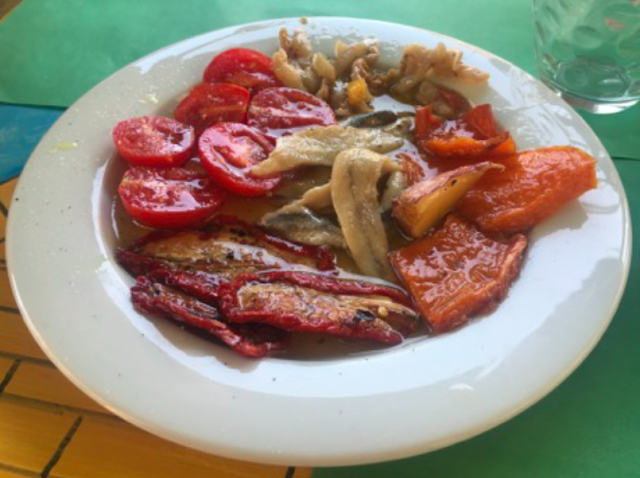
Finally, the last of Palermo’s historic markets is Borgo Vecchio which means ‘old village.’ Even though it has ‘old’ in the name, this market is thought of as Palermo’s modern market because the shops and restaurants here stay open late and attract young people. Locals come for an evening browse before heading to pre-dinner drinks or ‘aperitivo’ with friends. Sometimes there are late night bargains for these shoppers. Hunt for inexpensive fruit, vegetables, bread, cheeses, and wine in the evening here.
The Street Food:
Fish, Fish, Fish

Grilled, fried, or fresh from the market Palermo has impeccable and copious amounts of exquisitely good fish from prawns to mussels to octopus to sword fish. Some typical Sicilian fish pasta dishes include ‘pasta con le sarde’ or pasta with sardines, ‘spaghetti cozze e vongole’ or spaghetti with mussels and clams, and ‘spaghetti ai ricci’ or spaghetti made with sea urchin.
Arancine
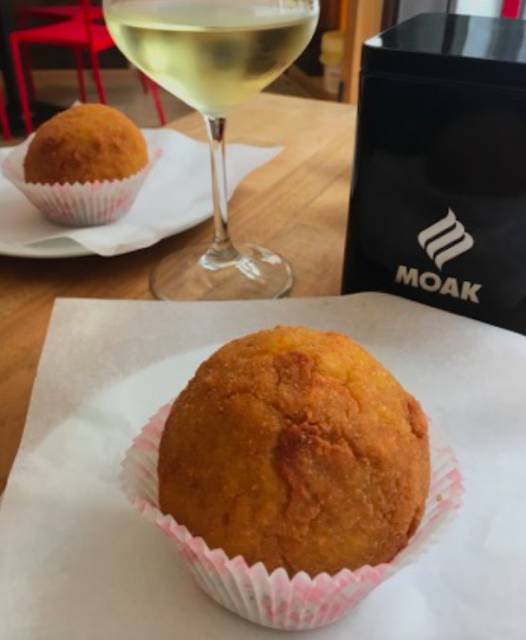
A Sicilian specialty, these large fried balls of rice are typically filled with either ‘ragù,’ a hearty meat sauce made with tomatoes and peas, or melting mozzarella. It is believed that they came about when Sicily was under Arabic control in the tenth century. The Arabic people, who typically eat a lot of rice, named them after the word for orange since they have similar shapes. Italians disagree over whether the name of this Sicilian treat is masculine, ‘arancino’ or feminine, ‘arancina’ and whether the plurals are ‘arancine’ or ‘arancini.’ In Palermo, the feminine, ‘arancina’ for one and ‘arancine’ for multiple, is used. Nowadays, they are a popular snack food sold on the streets and many cafes serve special varieties. One is the ‘arancine al burro’ which has ham, bechamel, and cheese stuffed among the rice. At home, Sicilian families often make them with leftover ‘risotto.’
Panelle
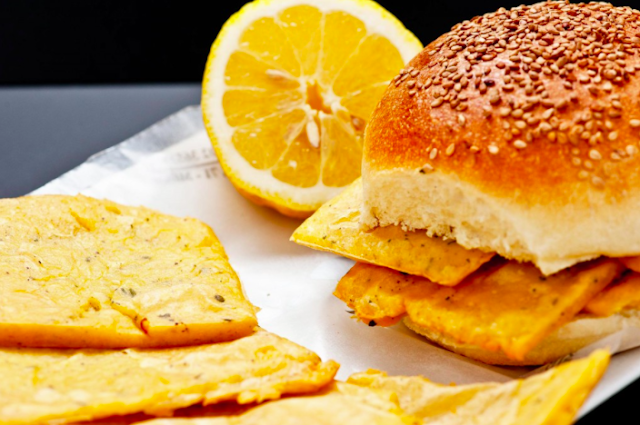
Another popular street food with Arabic origins is ‘panelle’ or ‘panelle di ceci.’ They are fried chickpeas that become delicious savory fritters. Usually, they are served between bread as a ‘panino’ or sandwich. It is best to try it on the soft Sicilian sesame bread called ‘vastedda’ or ‘vastella.’
Pani ca Meusa
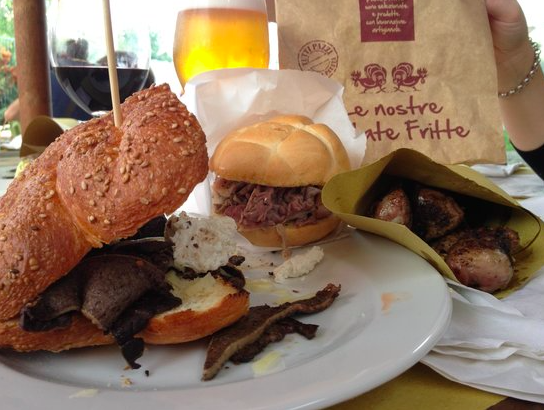
A specialty in Palermo, the name ‘pani ca meusa’ is in Sicilian and in Italian it is ‘panino con la milza,’ literally meaning spleen sandwich. These sandwiches are served on sesame bread and filled with pieces of veal spleen and lung that have been boiled and fried in animal fat. They can also be served with the southern Italian cheese, ‘caciocavallo’ or ‘ricotta.’ You can find (and smell) them being made to order at the markets Ballarò and Vuccuria.
Pezzi di Rosticceria
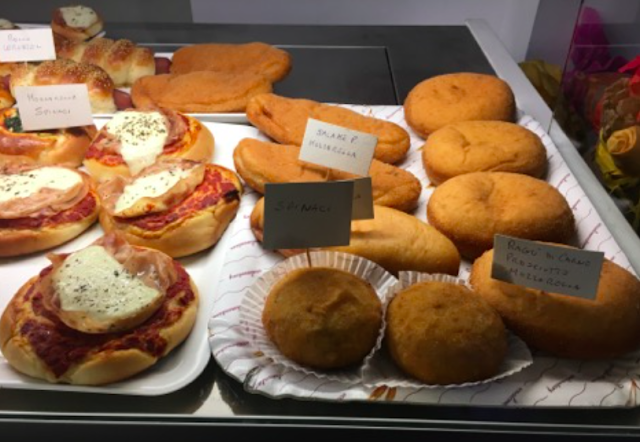
These delights, translating to pieces of baked or fried goods, are famously normal snacks for Sicilians. They are a collection of tasty baked or fried breads stuffed with savory ingredients. The Palermo specialty is the ‘rizzuole,’ a fried brioche filled with the same rich ‘ragù’ as the ‘aranacine.’ The ‘ravazzata’ is the baked version. Another favorite, the ‘pizzotto,’ is a baked brioche containing ‘prosciutto’ or ham, mozzarella, and tomatoes. Of course, it can also be fried.
The Street Sweets:
Brioche con Gelato
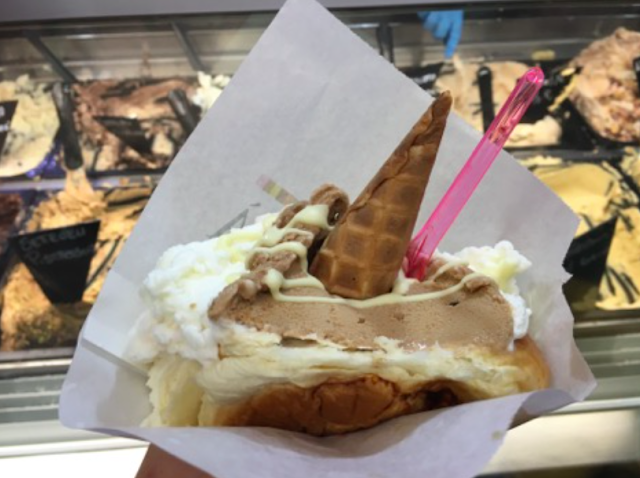
You guessed it, the brioche is well loved in Sicily. The brioche is a sweet, light, fluffy roll that works amazingly paired with sweet or savory foods. Instead of a cone or a cup, the brioche is typically used to eat Sicilian gelato. Legend has it that gelato originated in Sicily and there is no denying that it is especially creamy and rich in Palermo. At the ‘gelateria’ if they ask if you want your gelato ‘con panna’ say yes, it means homemade whipped cream.
Granita con Brioche
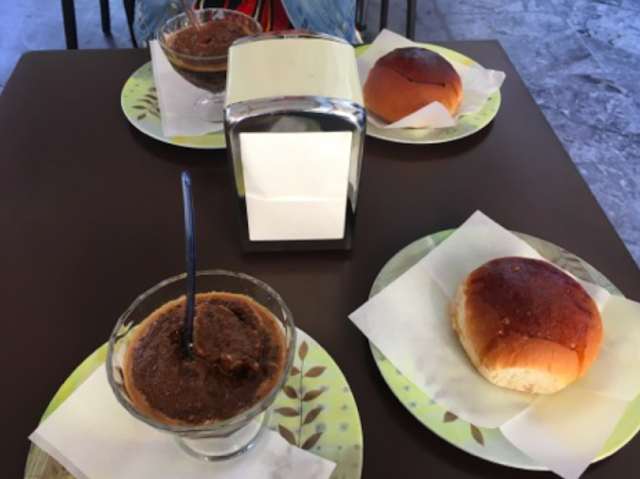
A common breakfast in Sicily, especially in the summer heat, is the Sicilian born ‘granita’ with a brioche. Granita is made from ice, sugar, and real ingredients to add the flavor (meaning no fake sugary syrups). The ice is infused with real coffee grounds, nuts, and fruit to create flavors such as ‘caffe’ or coffee, ‘mandorla’ or almond, ‘pistacchio’ or pistachio ‘limone’ or lemon, and ‘fragole’ or strawberry. Granita from Palermo tends to be chunkier, than other regions of Sicily. Dip that brioche into the granita as it melts!
Cannoli
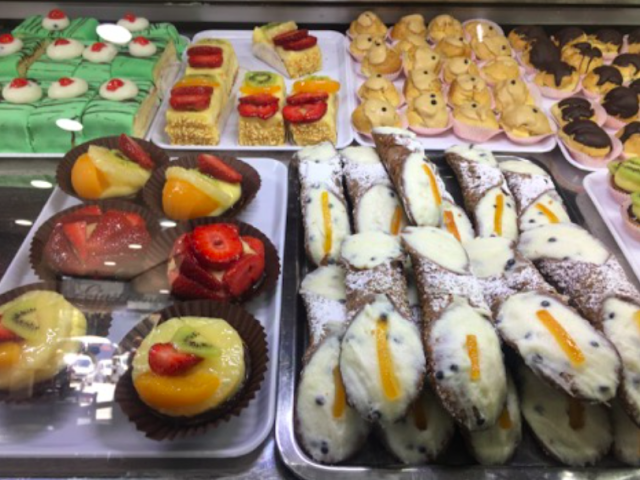
Possibly the most iconic Sicilian dessert is the ‘cannolo’ meaning ‘little tube’ in the Sicilian language. It is a crispy pastry shell rolled together and filled with sweet ricotta, chocolate chips, and candied fruit. Good ‘cannoli’ use pastry dough that has been fried that day. The shells should always be kept empty and filled with the ricotta in front of you eyes. Enjoy your handmade treat with an espresso after a meal or as a snack.
Cassata

Traditionally decorated and eaten for Easter, ‘cassata’ was born in Palermo and has become a regular dessert throughout Sicily with different variations throughout the world. It is a decadent sponge cake covered with the same sweet ricotta filling as the ‘cannoli,’ colorful marzipan, decorative icing, and candied fruits. Sometimes it is also soaked in a rich liquor. The Sicilian proverb, ‘Tintu è cu nun mancia a cassata a matina ri Pasqua,’ meaning ‘Pity who does not eat cassata on Easter’ speaks the truth. This insanely sweet cake, is insanely delicious.
Cassatella di Sant’Agata
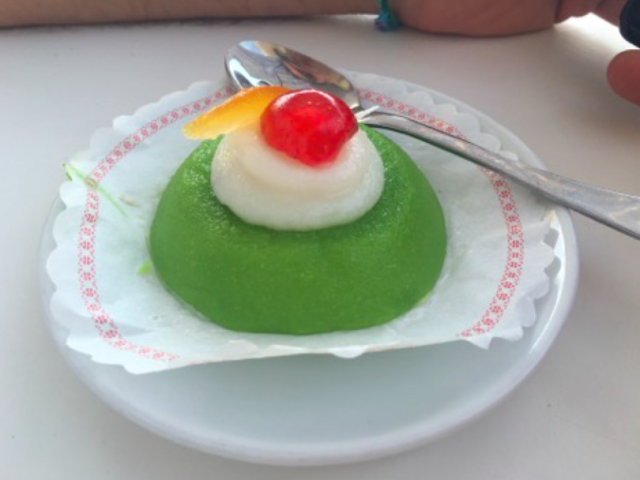
Although these ricotta filled and marzipan covered treats originate from Catania on the East coast of Sicily, they are found throughout Palermo. These mini cakes topped with candied cherries are worth trying, especially if you cannot stomach purchasing an entire ‘cassata.’ Their ingredients and over the top sweetness are very similar to the Easter cake. Also called ‘minne di Sant’Agata,’ they are traditionally served in early February for the Feast of Saint Agatha of Sicily who has been claimed as Palermo’s patroness. During her life she was persecuted for her devotion to her faith until her death in 251AD. It is said she had her breasts, her ‘minne,’ cut off as a form of torture, so these sweet treats are made to emulate Saint Agatha’s breasts and celebrate her strength, resistance, and piety.
Written by: Becky Heeley
If you liked this article, read also “FOODIE GUIDE OF ROME: ROMAN SPECIALTIES FOR TAKE AWAY“
